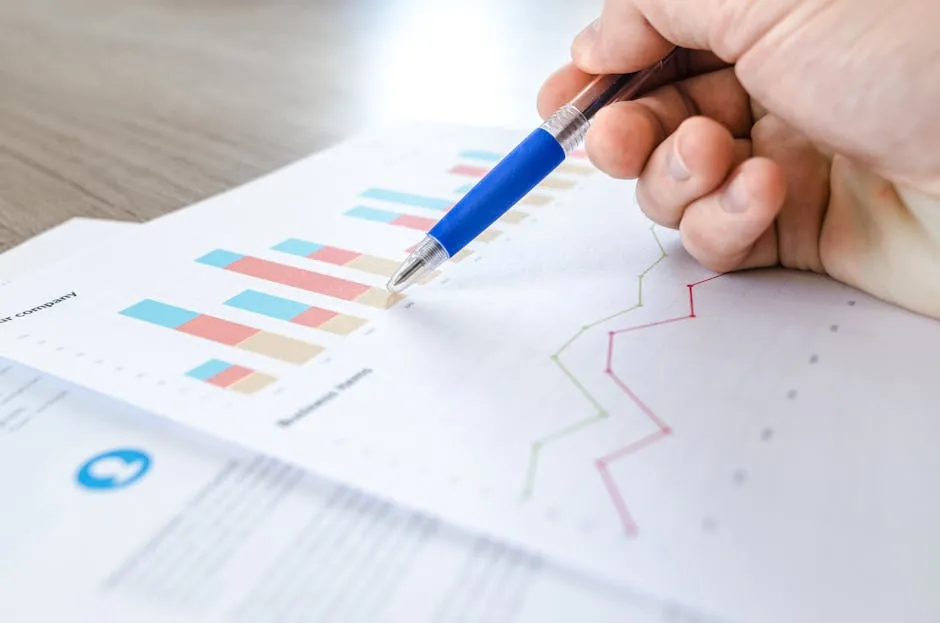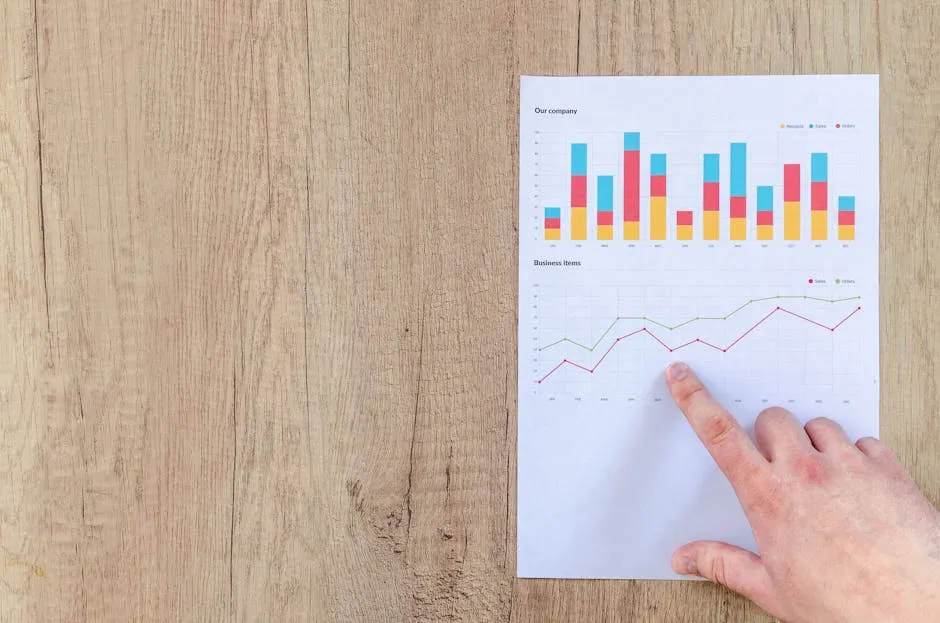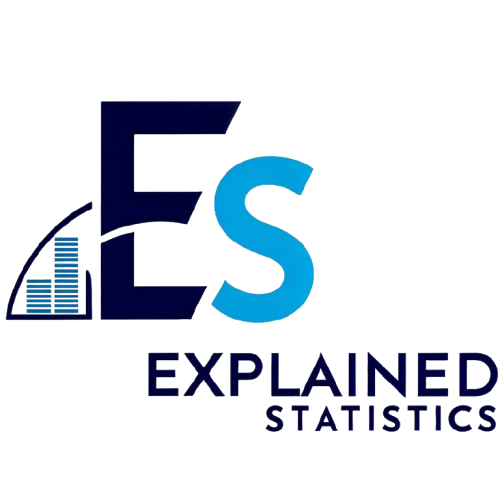Introduction
Elementary statistics is the foundation of data analysis. It’s the area of study that helps us understand how to collect, analyze, and interpret data. Think of it as the secret sauce behind the numbers we encounter every day in fields like science, business, health, and social sciences. From predicting election outcomes to understanding medical trials, statistics plays a vital role.
Statistical literacy is more important than ever. In today’s data-driven landscape, being able to read and interpret statistics is crucial. It empowers individuals to make informed decisions and to see through the noise of misleading data. You wouldn’t want to be the person who believes every statistic they read, right?
This guide aims to walk you through the essentials of elementary statistics. You’ll learn key concepts, practical applications, and various tools that can help you harness the power of data. By the end, you’ll have a solid grasp of elementary statistics, enabling you to engage with data more critically and effectively.
For those looking to get a head start on statistics, consider picking up Statistics for Dummies. It’s a friendly guide that turns complex concepts into digestible bites, perfect for beginners or anyone brushing up on their skills!
For a deeper understanding of statistical learning concepts, check out this introduction to statistical learning with Python.
What is Statistics?
Definition of Statistics
Statistics is the science of collecting, analyzing, interpreting, presenting, and organizing data. It’s not just about crunching numbers; it’s about making sense of them. Statistics can be divided into two main branches: descriptive and inferential statistics. Descriptive statistics summarizes data through numbers, graphs, and tables. Inferential statistics, on the other hand, helps us make predictions or inferences about a larger population based on a sample.
Statistics are everywhere! From polling data predicting election results to sports analytics evaluating player performance, statistics help us understand the world around us. Even your grocery store uses statistics to determine which products to stock based on consumer preferences.
If you’re looking to solidify your statistical knowledge, consider reading The Art of Statistics: Learning from Data. This book demystifies the concepts and shows how to apply them in real-world scenarios, making it a must-read for aspiring statisticians.
Key Terms in Statistics
Understanding statistics starts with grasping some key terms.
- Population and Sample: A population is the entire group of individuals or instances about whom we hope to learn. A sample is a subset of the population used to gather insights. For example, if we want to study the average height of adults in a city, the population includes all adults in that city, while the sample might only involve 100 of them.
- Variables: Variables are characteristics or attributes that can take different values. They can be classified into two types:
- Qualitative: These variables categorize data without numerical value, like colors or names.
- Quantitative: These variables represent measurable quantities, such as height or weight.
- Parameters vs. Statistics: A parameter is a numerical value summarizing a characteristic of a population, while a statistic is a numerical value summarizing a characteristic of a sample. For instance, the average salary of all teachers in a district is a parameter, while the average salary of a sample of 50 teachers is a statistic.
These fundamental concepts form the bedrock of statistics, allowing us to analyze data and draw meaningful conclusions. Understanding these terms provides a solid start for anyone interested in the world of statistics.

Types of Statistics
Statistics can be divided into two main types: descriptive statistics and inferential statistics. Each type serves a unique purpose and offers various tools to help us understand and interpret data. Let’s break these down.
Descriptive Statistics
Definition: Descriptive statistics is all about summarizing and organizing data. It provides straightforward insights into the data at hand, allowing us to present it in a meaningful way. Think of it as the first step in the statistical process.
Key Measures:
- Mean: This is the average of a dataset. To find it, add all the numbers together and divide by how many numbers there are. For example, if you have test scores of 80, 90, and 70, the mean is (80 + 90 + 70) / 3 = 80. For more on what mean means in statistics, refer to what does mean identically distributed in statistics.
- Median: The median is the middle value in a dataset when arranged in order. If there’s an even number of observations, take the average of the two middle numbers. For instance, in the set {70, 80, 90}, the median is 80, while in {70, 80, 90, 100}, the median is (80 + 90) / 2 = 85. For insights on median salary trends, see statistics poland median salary 2024.
- Mode: This is the value that appears most frequently in a dataset. In the list {1, 2, 2, 3, 4}, the mode is 2 because it appears twice.
- Range: The range shows the spread of data by calculating the difference between the highest and lowest values. If the highest score is 100 and the lowest is 50, the range is 100 – 50 = 50.
Visualization Tools: Visual tools help us make sense of data.
- Histograms: These bar graphs display the frequency of data points within specified ranges, making it easy to see distributions at a glance.
- Pie Charts: These circular graphs show proportions of a whole. Each slice represents a category’s contribution to the total.
- Box Plots: Box plots are great for visualizing the spread and skewness of data. They display the median, quartiles, and potential outliers, giving a clear picture of data distribution.

Inferential Statistics
Definition: Inferential statistics takes us a step further. It allows us to make predictions or generalizations about a larger population based on a sample. This is particularly useful when studying large groups, as gathering data from every individual can be impractical.
Key Concepts:
- Hypothesis Testing: This is a method used to test assumptions about a population. For example, we might want to know if a new teaching method is more effective than the traditional one. We’d formulate a hypothesis and then use sample data to test that idea.
- Confidence Intervals: These intervals provide a range of values that likely contain the population parameter. For instance, if we estimate the average height of adults in a city to be between 5’5” and 5’8” with 95% confidence, we’re saying that we’re 95% sure the true average lies within that range.
- Sampling Distributions: These distributions show how a statistic (like a mean) would behave if we took multiple samples from the same population. They help us understand variability and the reliability of our estimates.
In summary, descriptive statistics helps us summarize and visualize data, while inferential statistics enables us to draw conclusions and make predictions about larger groups based on smaller samples. Together, they form the backbone of statistical analysis, allowing us to interpret data effectively and make informed decisions.

Data Collection and Analysis
Understanding data collection and analysis is vital in statistics. Without quality data, your conclusions are as shaky as a toddler on a unicycle. Let’s break down how data is collected, analyzed, and interpreted, ensuring you avoid pitfalls along the way.
Data Collection Methods
Data collection is the first step in any statistical analysis. Think of it as gathering your ingredients before baking a cake. Here are three popular methods:
- Surveys: Surveys are like the social butterflies of data collection. They gather opinions or information from a sample population. You might fill out a survey while waiting for your coffee, answering questions about your preferences. Surveys can be conducted online, via phone, or even face-to-face.
- Experiments: This method is akin to the mad scientist approach. Experiments involve manipulating variables to observe effects. For example, a researcher might want to test if a new fertilizer improves plant growth. By comparing plants with the fertilizer to those without, they can draw conclusions based on observed differences.
- Observational Studies: This method is like being a curious cat—watching but not interfering. In observational studies, researchers collect data without manipulating variables. For instance, a study observing children in a playground might look at how often they share toys without altering the environment. This method helps gather natural behavior data but can be limited by external factors.
Choosing the right method depends on your research question and available resources. Each has its strengths and weaknesses, so pick wisely!
Once you have your data, it’s time to analyze it. Think of data analysis as the detective work of statistics—piecing together clues to solve a mystery. Here’s how to summarize and interpret data effectively:
- Statistical Software: Tools like R and SPSS Statistics Software are your trusty sidekicks in data analysis. They help you perform complex calculations and visualize data trends. R is particularly popular for its flexibility and power. It’s like having a Swiss Army knife for data analysis.
- TI-83 Calculators: These calculators are like the classic rock of statistical tools. They might seem old school, but they pack a punch! You can use them to perform basic statistical calculations, plot graphs, and even run regressions. Great for quick analyses on the go! Check out the TI-83 Plus Graphing Calculator for all your graphing needs!
- Summarization Techniques: When analyzing data, focus on summarizing key points. Use measures like mean, median, and mode to describe central tendencies. Visualizations, such as histograms and box plots, are your best friends for presenting data. They make complex information digestible, like turning a five-course meal into finger foods.

Common Pitfalls in Data Interpretation
Interpreting data can be tricky. Misleading statistics can turn you into a statistical villain faster than you can say “correlation does not imply causation.” Here are common pitfalls to watch out for:
- Misleading Averages: Averages can be deceiving. If you have a few outliers (think a millionaire crashing a neighborhood dinner party), your mean might not reflect the true picture. Always consider the median for a clearer view of data distribution.
- Cherry-Picking Data: This is like picking only the best berries from a bush. If you report only favorable data, you’re painting a skewed picture. Always present a balanced view. Transparency is key!
- Ignoring Sample Size: Smaller sample sizes can lead to inaccurate conclusions. A survey of three friends about pizza preferences isn’t representative of a larger population. Ensure your sample is large enough to draw valid conclusions.
By avoiding these pitfalls, you’ll interpret data like a pro, making informed decisions that stand the test of scrutiny. Remember, quality data and careful analysis lead to solid conclusions.

Real-World Applications
Statistics isn’t just for the mathletes and scientists—it’s the unsung hero in everyday life! Let’s break down how it sneaks into various fields, making a splash in the most surprising ways.
Healthcare
In the medical world, statistics are the backbone of research. They help track disease outbreaks, analyze treatment efficacy, and determine patient survival rates. For example, when drug companies test new medications, they rely on statistical methods to assess potential side effects and effectiveness. Without these methods, we’d be left guessing in the dark about our health!

Sports Analytics
Ever wondered how your favorite team decides which player to draft? Statistics. Sports analysts crunch numbers to evaluate player performance, strategize game plans, and predict outcomes. Think of it as the magic wand that helps coaches make informed decisions. Just remember, it’s not just about home runs and touchdowns; it’s about the data behind the plays!

Market Research
Companies want to know what you think (and what you’ll buy). Enter statistics. Businesses use surveys and statistical analysis to gauge customer preferences, forecast trends, and evaluate the success of their products. By analyzing data, they can tailor their marketing strategies, ensuring they hit the bullseye every time.

In a nutshell, statistics is the secret sauce that flavors various fields, helping professionals make decisions based on solid data rather than gut feelings. Who knew numbers could be so powerful? If you’re interested in diving deeper into the world of data science, Data Science for Business: What You Need to Know about Data Mining and Data-Analytic Thinking is a fantastic resource that combines theory with practical applications.

Case Studies
Let’s spice things up with some case studies that showcase the real-world impact of elementary statistics in action.
Case Study 1: Medical Trials
In a clinical trial for a new diabetes medication, researchers divided participants into two groups: one received the drug, while the other received a placebo. By applying statistical analysis, they determined that those on the medication had a significantly lower blood sugar level than those who received the placebo. This analysis not only validated the drug’s effectiveness but also influenced its approval by regulatory agencies. Without statistics, this critical evidence might have been overlooked.

Case Study 2: Sports Performance
Consider a professional basketball team analyzing player performance. By employing statistics, the team evaluated shooting percentages, assists, and rebounds. They discovered that one player had a stellar three-point shooting percentage but struggled with free throws. Armed with this data, coaches devised a tailored training program, ultimately improving the player’s overall performance. This data-driven approach turned a good player into a game-changer!

Case Study 3: Customer Satisfaction Surveys
A fast-food chain wanted to boost its customer satisfaction ratings. They distributed surveys to diners, measuring everything from food quality to service speed. Statistical analysis of the responses revealed that long wait times were the primary complaint. The chain then implemented changes to streamline operations. The result? A noticeable uptick in customer satisfaction and sales.

These case studies illustrate that elementary statistics is not just a collection of numbers; it’s a powerful tool that drives decisions and improvements across various sectors. Whether it’s saving lives, improving player performance, or enhancing customer experiences, statistics are the unsung heroes behind the scenes!
Please let us know what you think about our content by leaving a comment down below!
Thank you for reading till here 🙂
And if you’re looking to expand your statistical knowledge further, consider Data Mining: Concepts and Techniques. It’s a comprehensive guide that covers essential methods and applications in data mining, perfect for those diving deeper into the data world!
All images from Pexels




